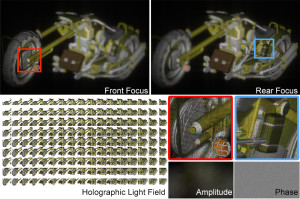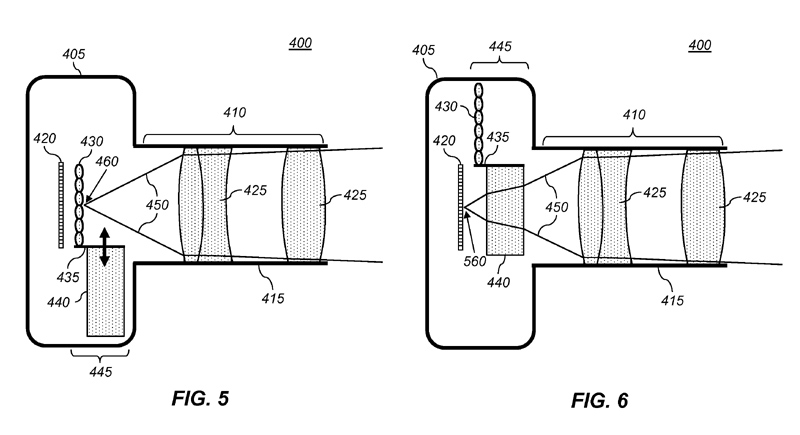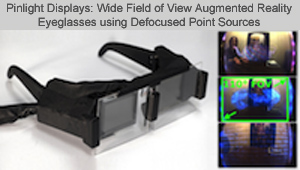Nvidia Near-Eye Lichtfeld Display: Verbesserte Methode für Hologramm-Rendering
 Im Jahr 2013 stellte Nvidia ein Near-Eye Lichtfeld-Display vor, das zum ersten Mal ein Virtual Reality Erlebnis mit interaktivem Fokus und Schärfentiefe ermöglichte. Die neue Technologie spiegelt den optischen Eindruck der Welt lebensechter als aktuelle VR-Headsets dar, die das gesamte Bild scharf zeigen. Wie bei jedem ersten Prototyp gab es auch hier deutliche Einschränkungen, inkl. Abstrichen in der Auflösung und Bildartefakten.
Im Jahr 2013 stellte Nvidia ein Near-Eye Lichtfeld-Display vor, das zum ersten Mal ein Virtual Reality Erlebnis mit interaktivem Fokus und Schärfentiefe ermöglichte. Die neue Technologie spiegelt den optischen Eindruck der Welt lebensechter als aktuelle VR-Headsets dar, die das gesamte Bild scharf zeigen. Wie bei jedem ersten Prototyp gab es auch hier deutliche Einschränkungen, inkl. Abstrichen in der Auflösung und Bildartefakten.
Bei der letztjährigen Siggraph Konferenz für Computergrafik stellten die Wissenschafter von Nvidia und MIT SCAIL rund um David Luebke eine neue Methode vor, um viele dieser Einschränkungen zu umgehen und bessere Hologramme schneller zu rendern:
Holograms have high resolution and great depth of field allowing the eye to view a scene much like seeing through a virtual window. Unfortunately, computer generated holography (CGH) does not deliver the same promise due to hardware limitations under plane wave illumination and large computational cost. Light field displays have been popular due to their capability to provide continuous focus cue. However, light field displays suffer from the trade offs between spatial and angular resolution, and do not model diffraction. We present a light field based CGH rendering pipeline allowing for reproduction of high-definition 3D scenes with continuous depth and support of intra-pupil view dependent occlusion. Our rendering accurately accounts for diffraction and supports various types of reference illumination for holograms. We prevent under- and over-sampling and geometric clipping suffered in previous work. We also implement point-based methods with Fresnel integration that are orders of magnitude faster than the state of art, achieving interactive volumetric 3D graphics. To verify our computational results, we build a see-through near-eye color display prototype with CGH that enables co-modulation of both amplitude and phase. We show that our rendering accurately models the spherical illumination introduced by the eye piece and produces the desired 3D imaginary at designated depth. We also derive aliasing, theoretical resolution limits, depth of field, and other design trade-off space for near-eye CGH.







Neueste Kommentare